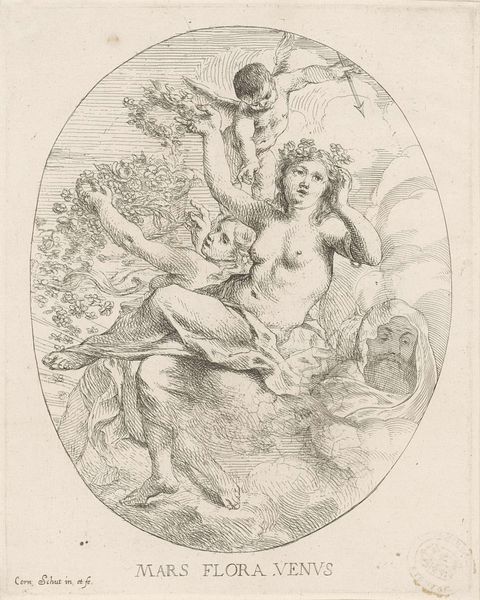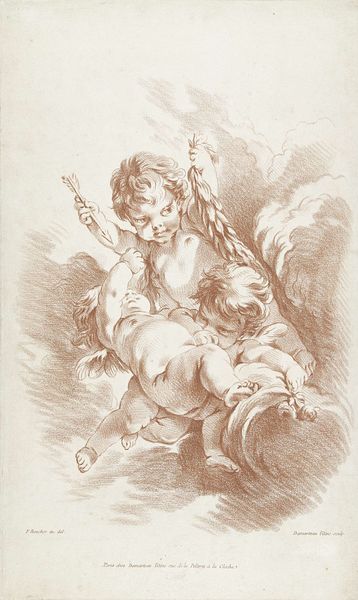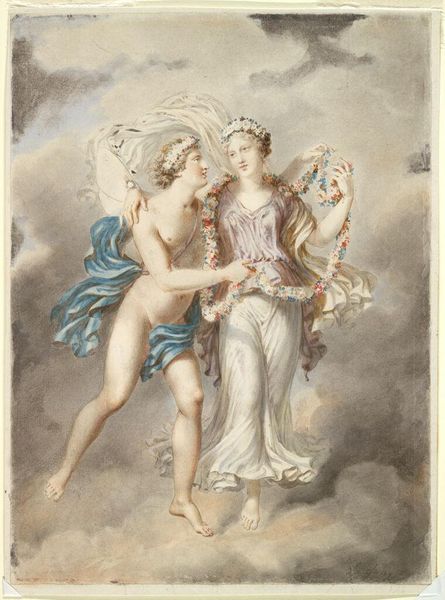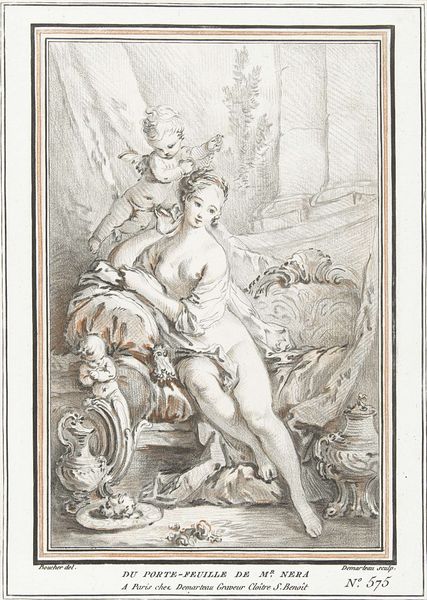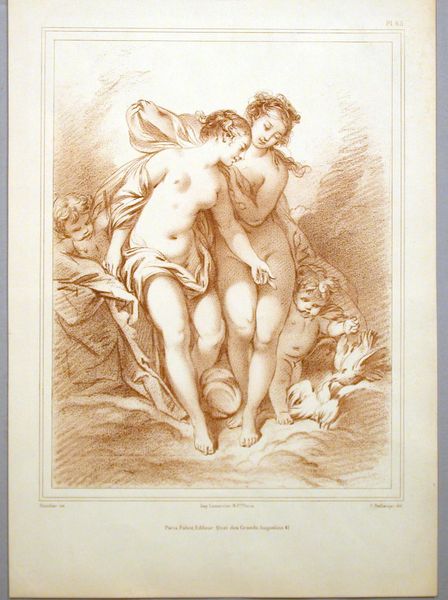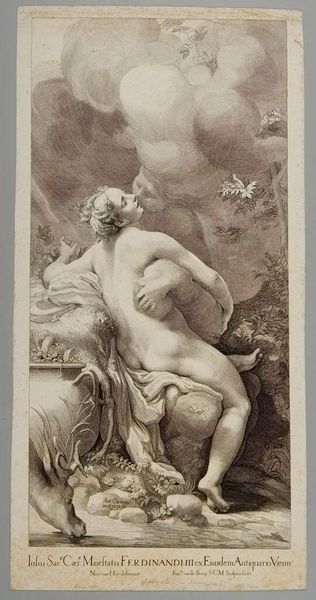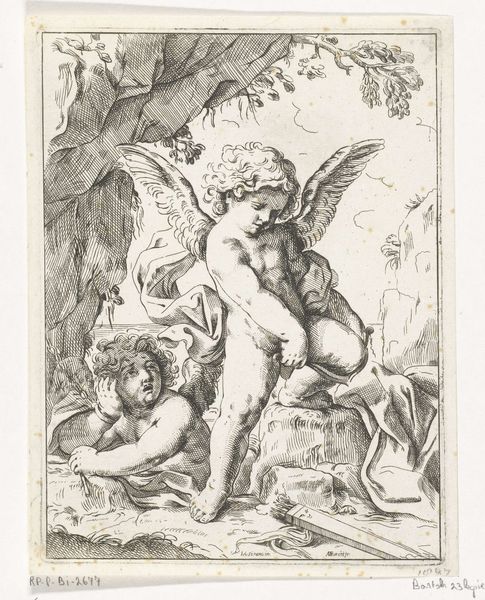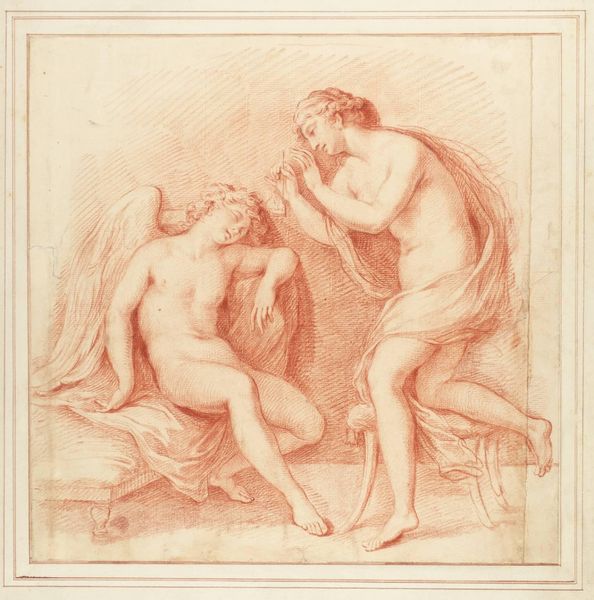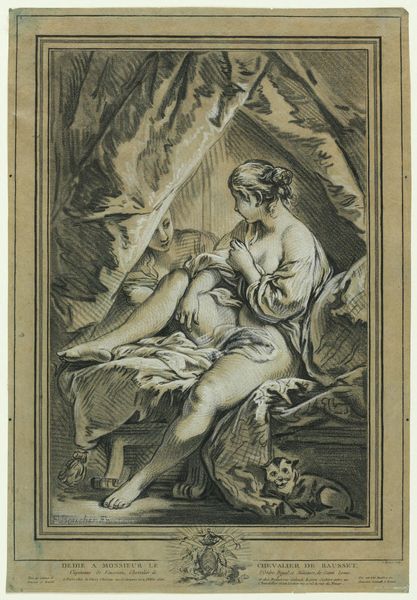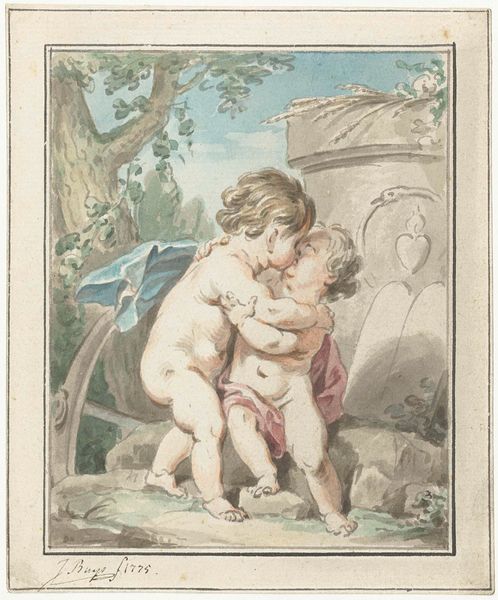
print, engraving
#
allegory
#
baroque
# print
#
figuration
#
nude
#
engraving
#
erotic-art
Dimensions: height 211 mm, width 150 mm
Copyright: Rijks Museum: Open Domain
Gilles Demarteau created this print of Venus and Amor, likely sometime in the late 18th century. It depicts Venus, the Roman goddess of love, with her son Cupid, surrounded by grapes. Prints like these played a crucial role in disseminating artistic ideas during this period. Demarteau, as the inscription tells us, operated his print shop in Paris. It was there that images of paintings and sculptures, often depicting classical subjects like Venus, were reproduced and sold to a growing market of art enthusiasts. These prints weren’t just copies; they were interpretations, often adapting the original work to suit the printmaking technique and the tastes of the time. The image itself speaks to the cultural fascination with classical antiquity that characterized the era, particularly within the French Royal Academy of Painting and Sculpture. The choice of subject matter, the idealized figures, and the elegant composition all reflect the Academy’s influence on artistic production. To truly understand this print, we can delve into the archives of the Royal Academy, explore the print market of 18th-century Paris, and examine the artist’s other works. These resources help us understand the social and institutional context in which it was made.
Comments
No comments
Be the first to comment and join the conversation on the ultimate creative platform.
